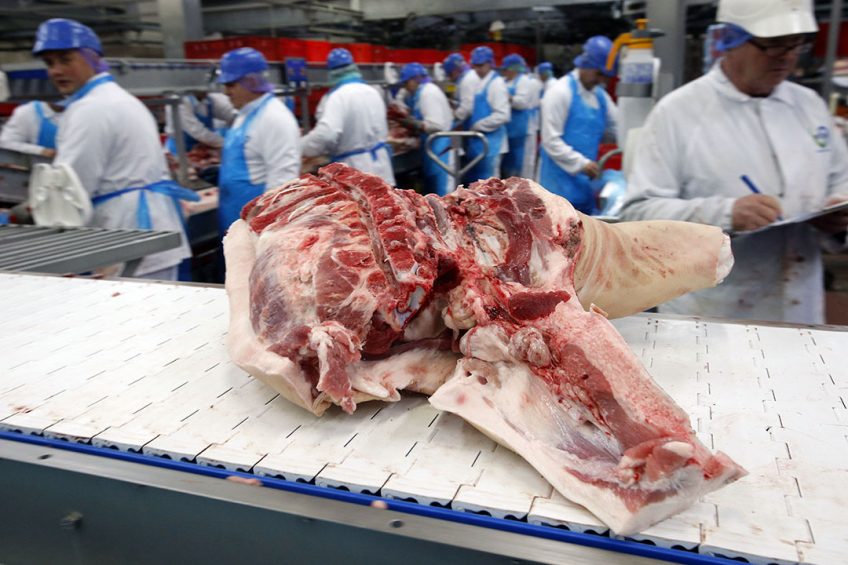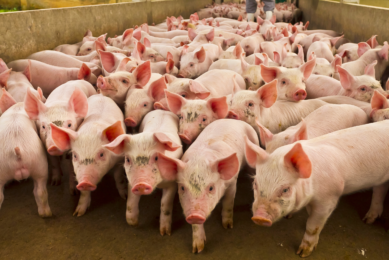Covid-19: Is US pig processing back to normal?

The US federal government claimed this week that pig processing had almost returned to 2019 levels, and for the second week in a row, the number of US pigs slaughtered exceeded those slaughtered in the same week last year. Meanwhile, other reports surfaced, indicating that things may not be entirely ‘back to normal’ yet.
During spring 2020, Covid-19 caused a sharp decline in North American pork processing capacity. Many North American packing plants were closed temporarily because of high numbers of worker infections. Pork processing speed was reduced due to worker illness or quarantine and because of changes to plant floors aimed at preventing disease transmission. Last week however, US secretary of agriculture Sonny Perdue announced that on a national basis, US pork processing had rebounded to 95% of the 2019 capacity.
US processing exceeds 2019 levels for second week
In his weekly Pork Commentary, Genesus CEO Jim Long reported that for the second consecutive week, the total number of pigs processed in the US exceeded 2019 levels. Long said that it was 2,457,000 last week, slightly higher than the 2,439,000 pigs slaughtered during the same week last year.
As expected, pig weights early last week were lower (214 lbs or 97 kg on average) compared to a month ago (220 lbs or 100 kg); weights were higher at that point due to the need for pigs to stay on farms because of processing backlogs.
And, while extensive pig backlogs still remain, Long believes the extent is currently lower than what has been predicted, and is not uniform across the country, but very much dependent on local plant capacity and other location-based factors.
Iowa pork processor expands finishing capacity
To address the farm backlog and avoid as much pig euthanasia as possible, Iowa Select Farms is expanding its finishing capacity in that state, reported US swine title Pork Business. The company has already secured a leased finishing space for 60,000 pigs and is planning to complete 17 more new finishing facilities over the next 3 months. The company is also changing its pig feeding strategy to slow weight gain.
Small plant expansion in North Carolina?
Also this week, a bill is being debated in the North Carolina state legislature that would provide $ 25 million in federal ‘CARES Act’ funding “to increase production at smaller meat processors” affected by Covid-19. The money could help small packing plants expand, train new workers and/or purchase equipment that boosts capacity or expands the product line.
Questions as to why plants had to stay open
Meanwhile, questions have been raised about the calls made 2 months ago by US pork firms asking the US president to force the continued operation of meat packing plants.
To review, in April the US pork industry warned of possible domestic meat shortages due to the effects of Covid-19 whilst at the same time, shipments of US pork to China hit record levels. By May, 2 of the largest US pork companies had addressed the perceived incongruity between their statements expressing concern over potential domestic pork shortages and their record pork exports. JBS reduced its pork exports levels, and Smithfield Foods had committed to making more domestic products.

Read the overview:
What happened last week in North America in relation to Covid-19?
Whole pig carcasses shipped to China
Mid-June, however, The New York Times reported that Smithfield Foods (owned by Chinese firm WH Group) and Tyson Foods both exported more pork to China that month than they had in 3 years, and total exports of US pork to China reached 129,000 tonnes.
And, whilst the industry claimed the pork exported in April was processed before Covid-19 arrived and that much of that pork consisted of products such as pig feet and organs not desired by US consumers, The New York Times now reported that about 40% of the April exports were whole pig carcasses, and “some analysts believe those totals could be even larger”.
Liability to protect levels of pork exports
The extreme warnings from Tyson Foods and other firms about potential domestic meat shortages prompted US president Donald Trump to invoke the Defense Production Act in late April, which forced packing plants to stay open. However, this week, USA Today quoted those who say the calls for packing plants to stay open were not to ensure adequate domestic pork supply, but to provide processors with liability protection against worker lawsuits and to protect their level of pork export.
Absenteeism extremely high
Even with the Defense Production Act in place, pork plants in the US may have to close or at least reduce operation because of very high levels of absenteeism. News agency Reuters reported on June 15 that 30% to 50% of meat packing plant workers across the US were absent last week because they are afraid of contracting Covid-19.
Although the world’s largest meat processors have taken many actions and spent tens of millions of dollars to protect workers, “infections have risen steadily in rural counties that are home to large meatpacking plants since Trump ordered them to stay open. At least 15 meatpacking counties now report a higher infection rate, on a per capita basis, than New York City, the virus’ epicenter”. At the Smithfield pork plant in Sioux Falls, SD, a third of the employees (about 1,200) were absent on June 1, including those who had quit their jobs.

Covid-19 Up-date
What impact is the pandemic having on the global pig sector and how are they dealing with it.
Pork prices still low
On a national basis at the end of May, pork prices for US consumers were 18.5% higher the same week a year ago. Other meats such as beef and chicken were 23 and 11% higher respectively. Lean hog meat is selling for about $ 0.48 cents/lb (or $ 1.06/kg) and the break-even price for farmers just to cover production costs is $ 0.60/lb (or $ 1.32/kg).
Pig producers still out of pocket
Experts said that despite these high pork prices in stores and the federal funding that is paying US pig farmers $ 17/pig sold from the start of the pandemic until late April, and further funding for inventory held from late April into May, the funding “does not come close” to getting farmers to the break-even point.











